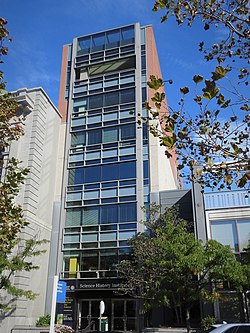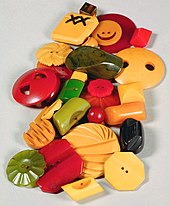
Gordon Earle Moore was an American businessman, engineer, and the co-founder and emeritus chairman of Intel Corporation. He proposed Moore's law which makes the observation that the number of transistors in an integrated circuit (IC) doubles about every two years.

Arnold Orville Beckman was an American chemist, inventor, investor, and philanthropist. While a professor at California Institute of Technology, he founded Beckman Instruments based on his 1934 invention of the pH meter, a device for measuring acidity, later considered to have "revolutionized the study of chemistry and biology". He also developed the DU spectrophotometer, "probably the most important instrument ever developed towards the advancement of bioscience". Beckman funded the Shockley Semiconductor Laboratory, the first silicon transistor company in California, thus giving rise to Silicon Valley. After retirement, he and his wife Mabel (1900–1989) were numbered among the top philanthropists in the United States.

Carl Djerassi was an Austrian-born Bulgarian-American pharmaceutical chemist, novelist, playwright and co-founder of Djerassi Resident Artists Program with Diane Wood Middlebrook. He is best known for his contribution to the development of oral contraceptive pills, nicknamed the "father of the pill".

Beckman Coulter, Inc. is a Danaher Corporation company that develops, manufactures, and markets products that simplify, automate, and innovate upon complex biomedical testing. It operates in two industries: Diagnostics and Life Sciences. For more than 80 years, Beckman Coulter Inc. has helped healthcare and laboratory professionals, pharmaceutical and biotechnology companies, universities, medical schools, and research institutions worldwide.

Henry Cary was an American engineer and the co-founder of the Applied Physics Corporation, along with George W. Downs and William Miller. The Cary 14 UV-Vis-NIR and the Cary Model 81 Raman Spectrophotometer were particularly important contributions in scientific instrumentation and spectroscopy. Before starting Applied Physics, Cary was employed by Beckman Instruments, where he worked on the design of several instruments including the ubiquitous DU spectrophotometer. Howard Cary was a founder and the first president of the Optical Society of Southern California.

Robert Geoffrey William Anderson, is a British museum curator and historian of chemistry. He has wide-ranging interests in the history of chemistry, including the history of scientific instrumentation, the work of Joseph Black and Joseph Priestley, the history of museums, and the involvement of the working class in material culture. He has been Director of the Science Museum, London, the National Museums of Scotland, the British Museum, London, and president and CEO of the Chemical Heritage Foundation in Philadelphia.
Elkan Rogers Blout was a biochemist at Polaroid Corporation, Boston Children's Hospital, and the Edward S. Harkness Professor of Biological Chemistry, emeritus at Harvard University.
Arie Jan Haagen-Smit was a Dutch chemist. He is best known for linking the smog in Southern California to automobiles and is therefore known by many as the "father" of air pollution control. After serving as an original board member of the Motor Vehicle Pollution Control Board, formed in 1960 to combat the smog, Dr. Haagen-Smit became the California Air Resources Board's first chairman in 1968. Shortly before his death in Pasadena, California, of lung cancer, the Air Resources Board's El Monte Laboratory was named after him.

Donald Frederick Othmer was an American professor of chemical engineering, an inventor, multi-millionaire and philanthropist, whose most famous work is the Kirk-Othmer Encyclopedia of Chemical Technology, which is a major reference work in chemistry.

Robert Lincoln McNeil Jr. was an American chemist and pharmaceutical industry executive. He was responsible for, among other things, the commercial development, naming, and introduction of the pain reliever Tylenol.
Life Sciences Foundation (LSF) was a San Francisco-based nonprofit organization that was established in 2011 to collect, preserve, interpret, and promote the history of biotechnology. LSF conducted historical research, maintained archives and published historically relevant materials and information.

Kathryn "Kitty" Hach-Darrow was an American businesswoman and philanthropist who co-founded the Hach Chemical Company in 1947 with her first husband Clifford C. Hach. She was essential to the company's expansion, flying her own plane to small airfields across the country to sell water purification kits. She became president, chief operating officer, and CEO of the Hach company.

The Othmer Gold Medal recognizes outstanding individuals who contributed to progress in chemistry and science through their activities in areas including innovation, entrepreneurship, research, education, public understanding, legislation, and philanthropy. The medal is presented annually under the sponsorship of the Science History Institute and four affiliated organizations: the American Chemical Society (ACS), the American Institute of Chemical Engineers (AIChE), The Chemists' Club, and the American section of the Société de Chimie Industrielle, at the Science History Institute's Heritage Day.

The Pittcon Heritage Award recognizes "outstanding individuals whose entrepreneurial careers shaped the instrumentation and laboratory supplies community." The award is jointly sponsored by the Pittsburgh Conference on Analytical Chemistry and Applied Spectroscopy (Pittcon) and the Science History Institute. The award is presented annually at a special ceremony during Pittcon.
R. Robert Brattain was an American physicist at Shell Development Company. He was involved in a number of secret projects during World War II. He is recognized as one of America's leading infrared spectroscopists for his work in designing several models of spectrophotometer, and for using the infrared spectrophotometer to determine the β-lactam structure of penicillin. His instrumentation work was essential to the subsequent study and understanding of structures in organic chemistry.

John D. Baldeschwieler is an American chemist who has made significant contributions in molecular structure and spectroscopy.

The Beckman Institute at Caltech is a multi-disciplinary center for research in the chemical and biological sciences, located at and partnering with the California Institute of Technology (Caltech) in Pasadena, California, United States.

The DU spectrophotometer or Beckman DU, introduced in 1941, was the first commercially viable scientific instrument for measuring the amount of ultraviolet light absorbed by a substance. This model of spectrophotometer enabled scientists to easily examine and identify a given substance based on its absorption spectrum, the pattern of light absorbed at different wavelengths. Arnold O. Beckman's National Technical Laboratories developed three in-house prototype models and one limited distribution model (D) before moving to full commercial production with the DU. Approximately 30,000 DU spectrophotometers were manufactured and sold between 1941 and 1976.

Arnold Thackray is an emeritus professor at the University of Pennsylvania. Initially an English chemist, he became an entrepreneurial American. Thackray founded or extended a series of institutions, initially in Philadelphia, then on a wider scale within the History of Science Society (HSS) and through Science History Consultants, and the Life Sciences Foundation.

Charles C. Price was an American chemist and president of the American Chemical Society (1965). He taught at the University of Illinois at Chicago, the University of Notre Dame, and the University of Pennsylvania.






























